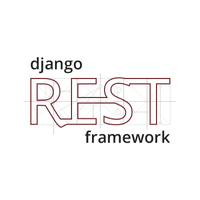Need advice about which tool to choose?Ask the StackShare community!
Get Advice from developers at your company using StackShare Enterprise. Sign up for StackShare Enterprise.
Learn MorePros of Django REST framework
Pros of Sails.js
Pros of Tastypie
Pros of Django REST framework
- Easy to use66
- Browsable api65
- Great documentation53
- Customizable50
- Fast development42
- Easy to use, customizable, pluggable, serializer9
- Python8
- Django ORM7
- FastSerialize5
- Less code3
- Easy implementation2
Pros of Sails.js
- Data-driven apis49
- Waterline ORM47
- Mvc37
- Easy rest32
- Real-time25
- Open source21
- Service-oriented architecture19
- Scalable18
- Convension over configuration10
- Rails-like asset pipeline9
- Node machines and machinepacks9
- Easy route/controller generation7
- Ruby on Rails basic stuff for JS devs6
- CLI for scaffolding project pieces3
- WebSocket support3
- Supportive community1
Pros of Tastypie
- Good in Django2
- Fast development1
- Customizable1
Sign up to add or upvote prosMake informed product decisions
Cons of Django REST framework
Cons of Sails.js
Cons of Tastypie
Cons of Django REST framework
- Bad documentation2
- Reimplements Django functionality2
- No support for URL Namespaces1
- Bad CSRF handling0
Cons of Sails.js
- Waterline ORM5
- Defaults to VueJS4
- Standard MVC0
Cons of Tastypie
Be the first to leave a con
Sign up to add or upvote consMake informed product decisions
- No public GitHub repository available -
What is Django REST framework?
It is a powerful and flexible toolkit that makes it easy to build Web APIs.
What is Sails.js?
Sails is designed to mimic the MVC pattern of frameworks like Ruby on Rails, but with support for the requirements of modern apps: data-driven APIs with scalable, service-oriented architecture.
What is Tastypie?
Tastypie is a webservice API framework for Django. It provides a convenient, yet powerful and highly customizable abstraction for creating REST-style interfaces.
Need advice about which tool to choose?Ask the StackShare community!
Jobs that mention Django REST framework, Sails.js, and Tastypie as a desired skillset
What companies use Django REST framework?
What companies use Sails.js?
What companies use Tastypie?
What companies use Django REST framework?
What companies use Sails.js?
Sign up to get full access to all the companiesMake informed product decisions
What tools integrate with Django REST framework?
What tools integrate with Sails.js?
What tools integrate with Tastypie?
What tools integrate with Tastypie?
Sign up to get full access to all the tool integrationsMake informed product decisions
Blog Posts
What are some alternatives to Django REST framework, Sails.js, and Tastypie?
Django
Django is a high-level Python Web framework that encourages rapid development and clean, pragmatic design.
Flask
Flask is intended for getting started very quickly and was developed with best intentions in mind.
Swagger UI
Swagger UI is a dependency-free collection of HTML, Javascript, and CSS assets that dynamically generate beautiful documentation and sandbox from a Swagger-compliant API
Graphene
Graphene is a Python library for building GraphQL schemas/types fast and easily.
Spring Boot
Spring Boot makes it easy to create stand-alone, production-grade Spring based Applications that you can "just run". We take an opinionated view of the Spring platform and third-party libraries so you can get started with minimum fuss. Most Spring Boot applications need very little Spring configuration.











































